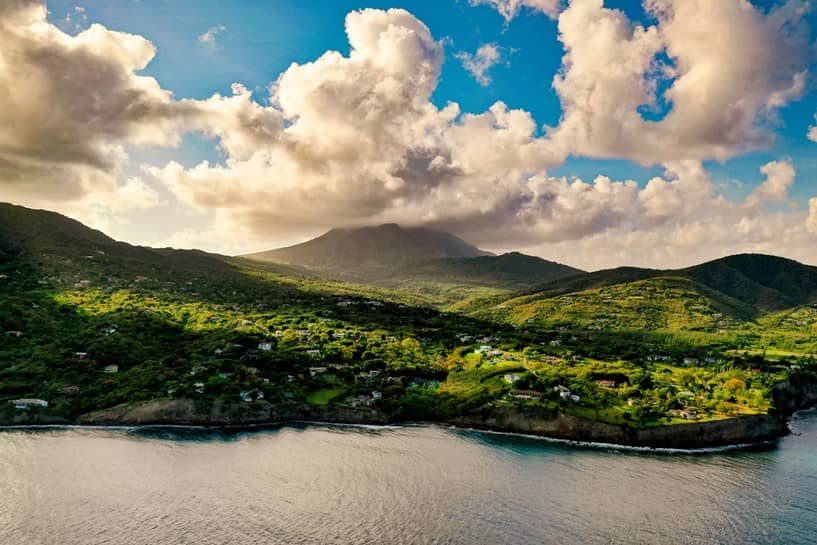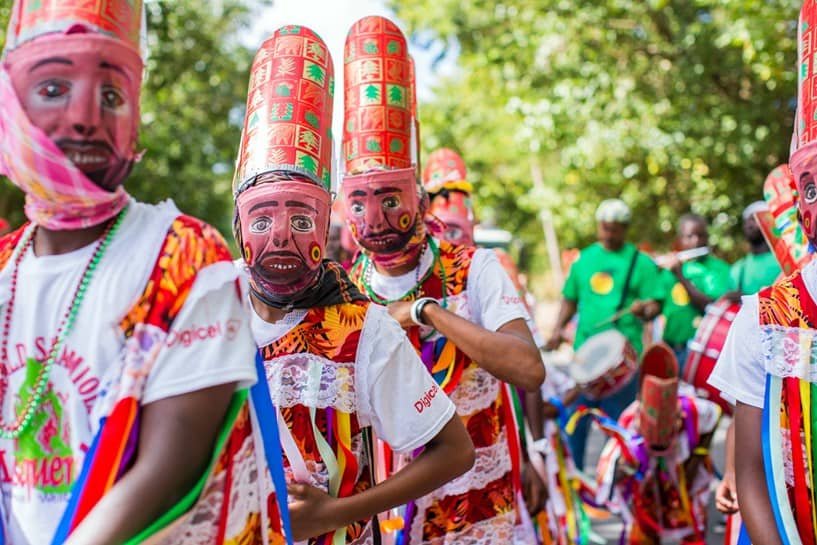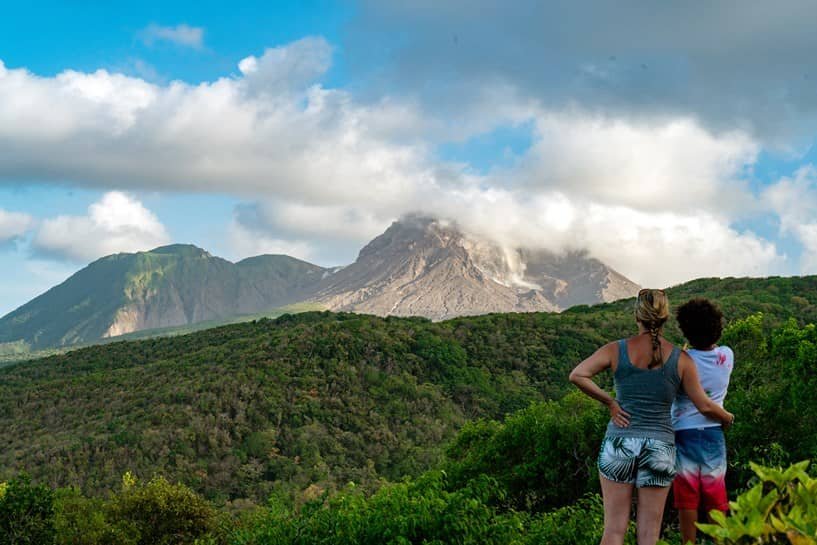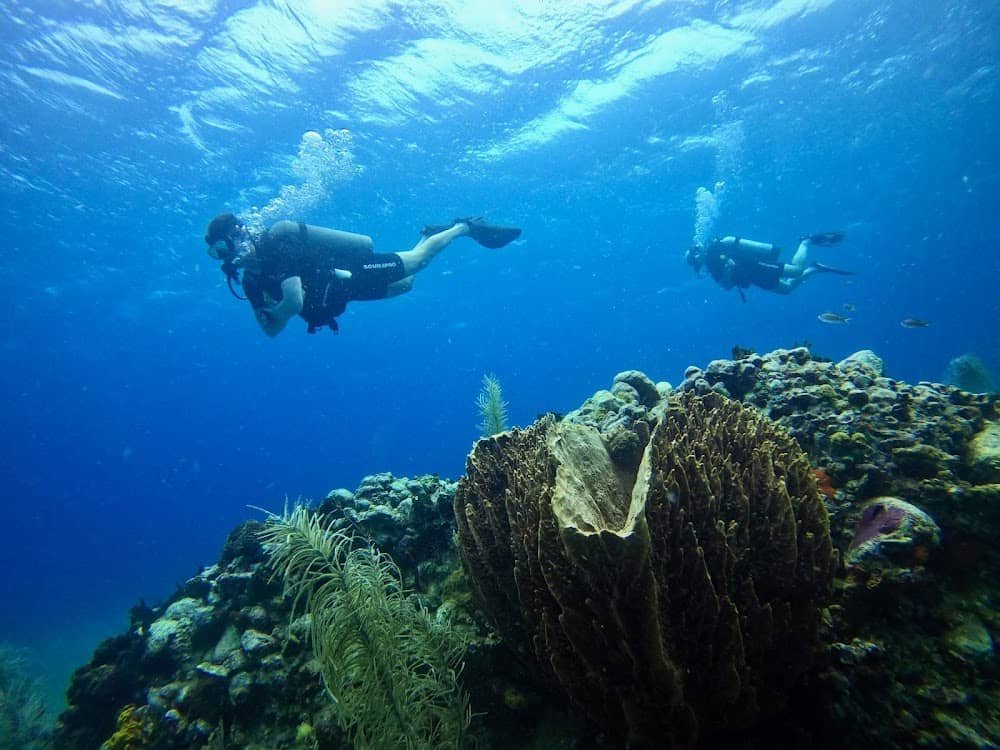Content Index
Introduction
The Caribbean island of Montserrat can be considered to be one of the Region’s best kept secrets. The lush landscape, unique culture, and welcoming population make it an ideal destination for those seeking to find adventure off the beaten path, while embracing the amenities offered and the ability to work remotely. Montserrat’s unique appeal is heightened by the way it balances modern conveniences with old-world charm, which in turn creates a better quality of life.
CLICK HERE TO DISCOVER HOW TO WORK REMOTELY FROM MONTSERRAT!
The island offers a glimpse into its unique history and culture, created by the legacy of a combination of European and African heritage. It forms part of the Lesser Antilles island chain, is located about 27 miles (43 km) southwest of Antigua and about 30 miles (50 km) northwest of Guadeloupe. There is a wide variety of activities to experience in a varied topographical landscape, providing the best of all worlds, both on land and at sea. These activities suit all ages, from young children to those who are young at heart, so kick back and enjoy this exploration that will help you discover this paradise that is Montserrat!

The History of Montserrat: The Caribbean’s Best Kept Secret
When Montserrat was sighted by Christopher Columbus during his second voyage to the Americas in November 1493, it was uninhabited. Columbus decided to name the island after the abbey in Montserrat, Spain, and in 1632 It was colonized by Irish Catholics who came from the nearby island of Saint Kitts. There was a second influx of Irish immigrants who came from Virginia, and plantations were established to produce crops of tobacco, indigo, cotton and sugar.
It is estimated that large numbers of slaves from Africa were probably first taken to Montserrat in the late 17th century. Eventually, the plantation system declined after 1834, once slavery was abolished. Montserrat is now a British Overseas Territory, after being part of the British Federal Colony of the Leeward Islands, which at that time included the British Virgin Islands, Saint Kitts–Nevis–Anguilla, and Dominica.
Fast Forward to July 1995, after hundreds of years of being in a dormant state, the volcanic domes located in the Soufrière Hills began to erupt. As a result, ash and volcanic debris covered large areas of the island, and a major eruption in June 1997 resulted in casualties. The southern half of the island, including the capital, Plymouth, became uninhabitable. Although many people focus on this aspect of Montserrat’s history, the island has transcended this legacy to appeal to those who appreciate its resonant authenticity, and the undeniable beauty that the island has to offer.

Montserrat’s Unique Expression of Caribbean Culture
Also known as “The Emerald Isle”, Montserrat is one of only three regions in the world to celebrate St. Patrick’s Day as a public holiday.

During the 17th and 18th Centuries, the thousands of Irish Catholics who came from Saint Kitts and Virginia were seeking a new beginning away from the throes of persecution in Britain and colonial America. It is this combination of Irish and African heritage that forms part of the cultural extravaganza during the annual festivities, held during mid-March, which feature parades, concerts, and food festivals. St. Patrick’s Day festivities also mark the anniversary of a 1768 slave rebellion, and this anniversary is a crucial aspect of Montserratian cultural identity.
St. Patrick’s Day celebrations also provide the opportunity to experience the culinary culture of Montserrat. One of the most well-known dishes is goat water, a stew that is the national dish. It is believed to represent a mixture of the African and Irish ancestry of the island, and is made with goat meat, green seasonings, cloves , and rum!
Some of the other cultural highlights throughout the year include:
- The Calabash Festival, which features a family fun day, hike, island tour, African fashion show, coastal excursions to the former capital city of Plymouth, and a craft and food fair.
- The Cudjoe Head Festival, an annual celebration of Montserrat’s African heritage which started in 1989 and features the sounds of steelband music, live music, masquerade dancing, arts and crafts made by the villagers.
- The Alliouagana Festival of the Word, a unique literary festival that brings together local writers and historians to celebrate their talents.
- Montserrat Carnival is held Mid-December, and is a testimony to the dynamic music, culture and history that is a part of this Caribbean destination, showcasing calypso competitions, pageantry, j’ouvert, street jams, steel pan music, open air concerts and masqueraders.

Montserrat: A Multitude of Activities Against a Backdrop of Caribbean Beauty
Although Montserrat is a relatively small island, it provides a wealth of activities and experiences that contribute to its stellar reputation as a destination featuring sustainable tourism. The island possesses some of the most stunning hiking trails in the Caribbean, most of which are found in the Centre Hills forest reserve. Here, the trails provide breath-taking views of the island and the deep blue vista of the Caribbean Sea. There is also the viewing platform at the top of Jack Boy Hill, where you can view the volcano and have a picnic.

These types of activities are perfect for families with children, and the Montserrat National Trust is in the process of creating an EcoPlay Park, a fantastic outdoor space and learning centre located adjacent to the botanical gardens. The aim of EcoPlay is to connect the local community with its ecological roots through play and innovative architecture. Visitors can learn about the island’s beautiful array of flora and fauna, such as the Montserrat orchid, and the oriole, the vibrant national bird.

The Oriole Walkway trail, has been named after the oriole bird and is one of the island’s most popular hikes, which provide hikers the opportunity to be immersed in the beautiful biodiversity. Nature lovers might encounter the “mountain chicken” (a large frog) and the galliwasp (half snake-half lizard)!
There is also the opportunity to see the archeological majesty of Amerindian petroglyphs.

Another fascinating archeological site is the abandoned capital of Plymouth, known as the Caribbean’s present-day Pompeii. A visit to this location is possible with certified and experienced tour guides who keep in direct contact with the Montserrat Volcano Observatory, which is also one of the stops on the tour. From the Observatory there are spectacular views of the contrast between the grey of the volcano’s peak, and the lush scenery of Belham Valley, Isles Bay and Garibaldi Hill.
Additional educational activities are provided by the Montserrat National Museum, which houses exhibitions showcasing the history of the island from the pre-Columbian era to present day.
Montserrat offers amazing experiences not only on land-base, but also at sea. It is one of the best places to go scuba diving in the Caribbean region, as there are no crowds, and the water is crystal-clear with fantastic visibility.

Of the many spots to choose from, some of the most popular are located at Woodlands Bay, Little Redonda, Bunkum Bay and Lime Kiln Bay. Another popular place is Rendezvous Beach, which stands out because of its white sand, in contrast to to the sparkling volcanic ebony sand of the island’s other beaches. It is known for the famous Bat Cave, where partially submerged caves are home to an indigenous species of fruit bat..

The Montserrat Tourism Division provides comprehensiveve and up-to-date information on all of the amazing things to do in this Caribbean paradise!
The Montserrat Remote Workers Stamp
The Caribbean island of Montserrat is considered to be one of the most favourable places to work remotely because, in comparison to global statistics, the COVID-19 pandemic has made a moderate impact on the island.. The Montserrat Remote Worker Stamp offers applicants the chance to work remotely from Monsterrat, and benefit from the superior quality of life.
CLICK HERE TO VIEW THIS WEBINAR ON THE MONTSERRAT REMOTE WORKERS STAMP!


Pingback: The Montserrat Remote Workers Stamp: Everything You Need To Know About Working in the Caribbean’s Most Unspoiled Destination - montserratremoteworker.com
Pingback: The Best of Both Worlds: Maintaining Work-Life Balance Living in the Caribbean Island of Montserrat - montserratremoteworker.com